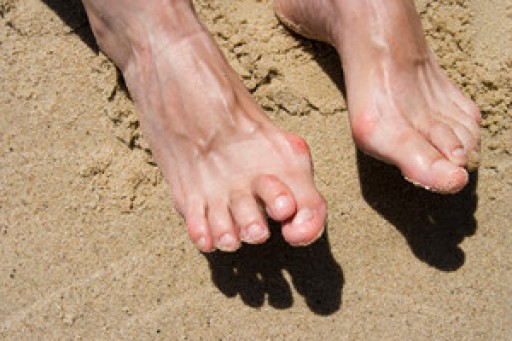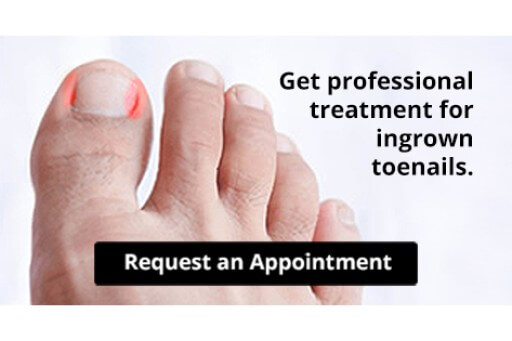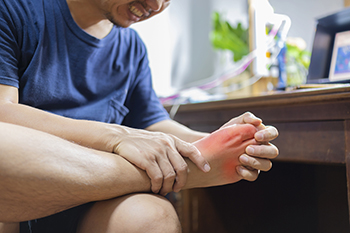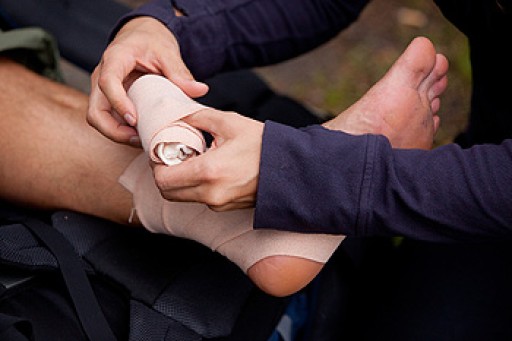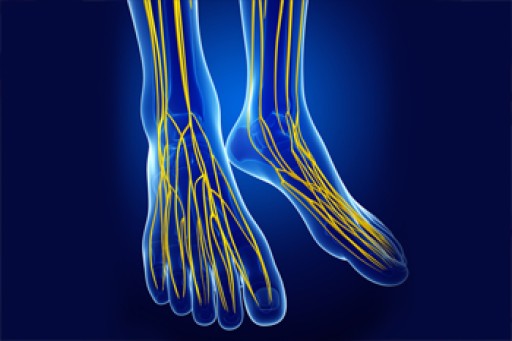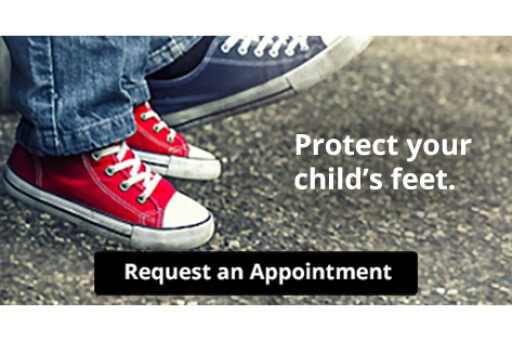 Hammertoes typically occur in the smaller toes of the foot. They can also be referred to as “Mallet Toe” or “Claw Toe,” depending on how the foot is affected. These conditions often occur when the soft tissues of the foot become too tight or get injured. Tight shoes are the most common cause of hammertoe, and of the variations can be the easiest to fix by wearing open-toed shoes and sandals, or roomy, softer closed-toe shoes. Shoe inserts, wrapping the toes after exercise, and maintaining a healthy body weight can help prevent excess pressure on the feet and toes. If discomfort persists, see a podiatrist who can recommend exercises and offer other solutions.
Hammertoes typically occur in the smaller toes of the foot. They can also be referred to as “Mallet Toe” or “Claw Toe,” depending on how the foot is affected. These conditions often occur when the soft tissues of the foot become too tight or get injured. Tight shoes are the most common cause of hammertoe, and of the variations can be the easiest to fix by wearing open-toed shoes and sandals, or roomy, softer closed-toe shoes. Shoe inserts, wrapping the toes after exercise, and maintaining a healthy body weight can help prevent excess pressure on the feet and toes. If discomfort persists, see a podiatrist who can recommend exercises and offer other solutions.
Hammertoes can be a painful condition to live with. For more information, contact the podiatrists of Boston Common Podiatry. Our doctors will answer any of your foot- and ankle-related questions.
Hammertoe
Hammertoe is a foot deformity that occurs due to an imbalance in the muscles, tendons, or ligaments that normally hold the toe straight. It can be caused by the type of shoes you wear, your foot structure, trauma, and certain disease processes.
Symptoms
- Painful and/or difficult toe movement
- Swelling
- Joint stiffness
- Calluses/Corns
- Physical deformity
Risk Factors
- Age – The risk of hammertoe increases with age
- Sex – Women are more likely to have hammertoe compared to men
- Toe Length – You are more likely to develop hammertoe if your second toe is longer than your big toe
- Certain Diseases – Arthritis and diabetes may make you more likely to develop hammertoe
Treatment
If you have hammertoe, you should change into a more comfortable shoe that provides enough room for your toes. Exercises such as picking up marbles may strengthen and stretch your toe muscles. Nevertheless, it is important to seek assistance from a podiatrist in order to determine the severity of your hammertoe and see which treatment option will work best for you.
If you have any questions, please feel free to contact our office located in Boston, MA . We offer the newest diagnostic and treatment technologies for all your foot care needs.
